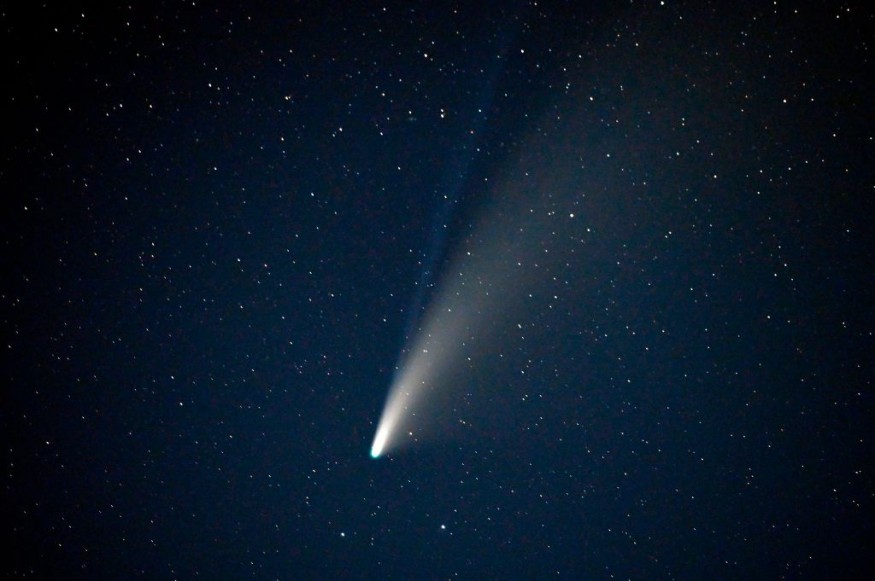Comets lose volatile ice and grow fainter over millions of years even beyond the orbit of Saturn, which was previously assumed to be part of their safe zone. The origin of this transition is unknown, but the answer may shed light on some other perplexing findings of frozen objects in the Solar System.
Every few years, Earth is dazzled by a comet passing through the inner Solar System, making its first near approach to the Sun in tens of thousands of years. Meanwhile, a more significant number of comets are passing near the Earth on a far more regular basis, and they go unnoticed. Nobody pays much attention to them until astronomers visit them through spacecraft. They've spent so much time close to the Sun that much of their frozen stuff has evaporated. Today's exhibits have lost their glitz and glam.
However, sunlight is faint beyond Saturn, so weak that methane and ammonia ices that convert to gas at temperatures of 182.456 °C (296.421 °F) and 77.73 °C (107.91 °F), respectively, remain solid. As a result, it was supposed that a comet could stay in such a region for as long as it wanted without losing material or brightness.
Dr. Nathan Kaib of the University of Oklahoma proves that this isn't the case. Kaib is the lead author of the article "Comet Fading Begins Before Saturn," published in Science Advances.

TOPSHOT - The Comet NEOWISE or C/2020 F3, with its two tails visible, is seen in the sky above Goldfield, Nevada on July 18, 2020. - The Comet C/2020 F3 was discovered March 27, 2020, by NEOWISE, the Near Earth Object Wide-field Infrared Survey Explorer, which is a space telescope launched by NASA in 2009.
ALSO READ : Earth Has 27.5-Million-Year Cycle of Major Geological Events Resulting in Mass Extinctions, Study Claims
Comets Fade, Lose Shine Even Beyond Saturn's Orbit
Researchers claim per Space.com that something deep in space must be changing the physical qualities of the comets, causing them to fade.
"Long-period comets, those that take at least hundreds of years to go around the Sun once, spend most of their lives thousands of times further from the Sun than the Earth is," said Kaib in a statement.
Jupiter and Saturn can radically alter the orbit of a comet that approaches them near enough. Still, they can also gradually influence comets that are considerably further away. Kaib calculated how comet orbits would alter due to the gradual drag and discovered that many will decrease, making their maximum distance from the Sun far higher than when they were formed.
Kaib concludes that comets with smaller orbits have faded to the point that they are difficult to identify, similar to those in the inner Solar System. The claim would be valid if the comets are stable beyond a yet-to-be-determined greater distance.
The researchers hypothesize that the comets have faded and are no longer visible to our telescopes, even though they are still somewhere beyond Saturn's orbit.
However, more powerful telescopes than scientists now have would be required to fully comprehend what is going on. According to Kaib and his colleagues, astronomers will most likely discover that the outer solar system is abundant with fading comets once they are available.
Comets orbiting between Jupiter and Saturn have been observed to periodically erupt in violent eruptions despite their frigid environment, indicating that "dirty snowballs" may lose their stuff even far from the sun.
Kaib's modeling received mixed responses from other experts. Some researchers said they are discovering fewer comets with smaller orbits because there aren't that many. Meanwhile, several recent finds back up his statements.
When the so-called "mega comet" C/2014 UN271 (Bernardinelli-Bernstein) passed near Neptune, cometary activity was observed. This comes after Hubble discovered cometary activity by C/2017 K2 Panstars at 2.4 billion kilometers (80 percent as far from the Sun as Uranus). Meanwhile, despite being in a reasonably circular orbit beyond Jupiter, where its ices should be stable, Comet 29P/Schwassmann-Wachmann continues to explode.
RELATED ARTICLE : Rest In Peace, Comet Leonard! Space Rock Breaks Into Pieces After Trying To Orbit The Sun
Check out more news and information on Space in Science Times.











